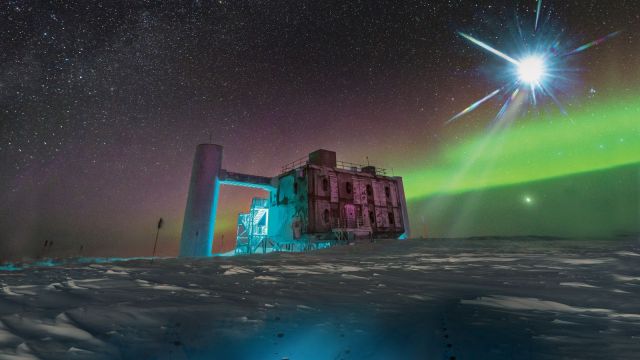Astronomers detect seven potential ‘ghost particles’ that passed through planet
Scientists using data from the IceCube Neutrino Observatory in Antarctica believe they have potentially found the first evidence for astrophysical tau neutrinos, called "ghost particles" because of how hard they are to find.
 An artistic rendering of the IceCube Lab at the south pole based on a real image. (IceCube/NSF)
An artistic rendering of the IceCube Lab at the south pole based on a real image. (IceCube/NSF)Neutrinos are miniscule subatomic particles that hardly interact with anything. This means that they can travel massive distances undisturbed and that in turn means that it is much easier to trace them back to their source, helping us understand more about the distant universe. Scientists from the IceCube Neutrino Observatory say they have discovered evidence for the elusive astrophysical tau neutrinos.
“The detection of seven candidate tau neutrino events in the data, combined with the very low amount of expected background, allows us to claim that it is highly unlikely that backgrounds are conspiring to produce seven tau neutrino imposters. The discovery of astrophysical tau neutrinos also provides a strong confirmation of IceCube’s earlier discovery of the diffuse astrophysical neutrino flux,” said Doug Cowen, a professor of physics at Penn State University and one of the study leads, in a press statement.
Astrophysical neutrinos is the name for high-energy neutrinos that come from the farthest reaches beyond our galaxy. These particles come in three different “flavours”: electron, muon and tau. The last has proven to be especially difficult to observe and detect, earning the moniker of “ghost particle.”
The observatory uses “strings” (cables) of digital optical modules (DOMs) to detect neutrinos. It has over 5,150 DOMs embedded deep within Antarctic ices. The reaction of neutrinos with the ice produces charged particles that emit blue light. This is registered and digitised by individual DOMs.
Previous IceCube observations showed hints for subtle signatures made by astrophysical tau neutrinos. Researchers rendered each event into three images and trained convolutional neural networks (CNNs) optimised for image classification to discern between images produced by tau neutrinos and images made due to other background processes. They then applied this technique to ten years of IceCube data collected between 2011 and 2020. That is how they found seven strong candidate tau neutrino events.






